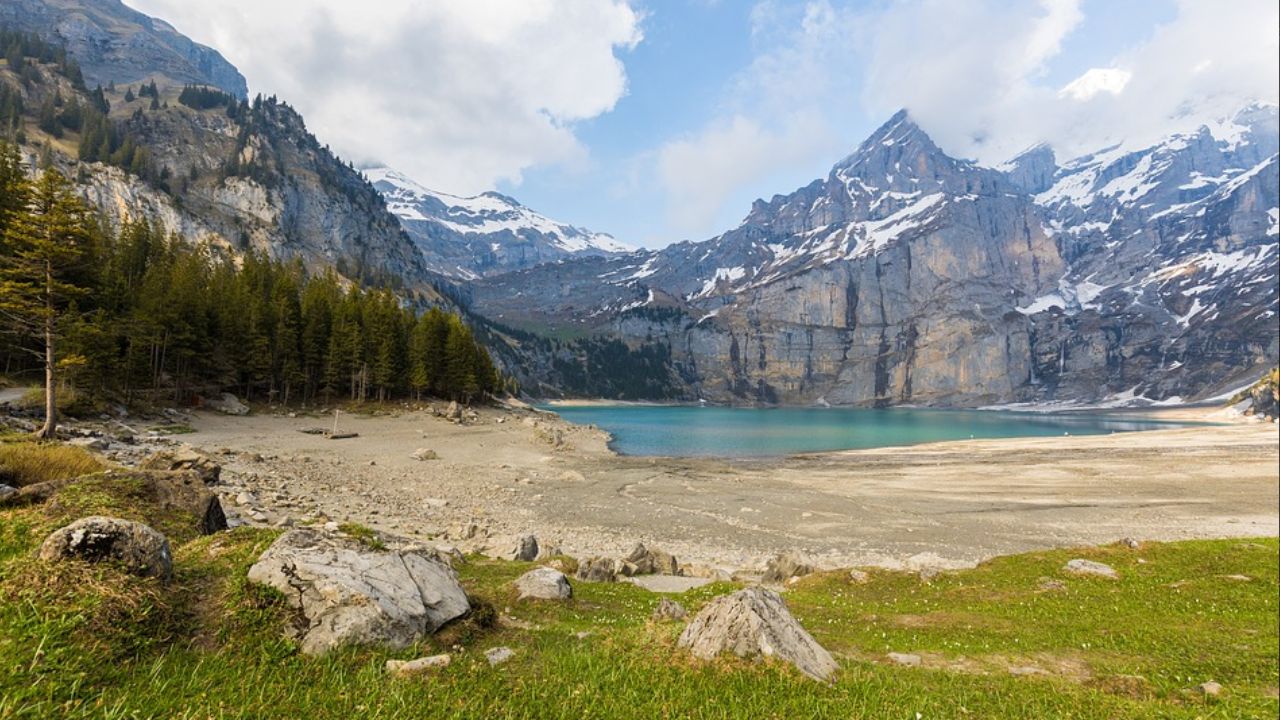Glacier National Park, located in the rugged mountains of the United States, is a pristine wilderness filled with stunning landscapes, abundant wildlife and of course, is most famous for its magnificent glaciers. These ancient glacial rivers have sculpted many of the park’s terrain over thousands of years, leaving a landscape of breathtaking beauty and ecological diversity. In this comprehensive guide, we explore the fascinating world of glaciers, exploring their formation, their role in shaping the landscape, and the challenges they face now in an era of climate change. Join us as we embark on a journey through the icy regions of Glacier National Park and discover all the unknown mysteries.
Understanding Glaciers
What are glaciers?
Glaciers are large bodies of ice that have formed as a result of many years of snowfall. As layers of ice build up and compress under their own weight, they eventually transform into dense, compressed ice. Over time, these ice masses can grow to enormous sizes, drifting slowly under the influence of gravity.
Formation of Glaciers
Glaciers usually form in areas where the amount of snow melt has been spreading over the years. In mountainous areas such as Glacier National Park, this process often occurs at higher elevations where temperatures are cold enough for snow to accumulate, and it continues essentially year-round. As more snow accumulates and the ice compresses, the glacier also begins to flow downslope, carving valleys and shaping the landscape in its wake.
Types of Glaciers
Glaciers come in many forms, each exhibiting unique characteristics based on factors such as location, climate, and terrain. In Glacier National Park, you will encounter two primary types of glaciers:
Alpine Glaciers: These glaciers form in mountainous regions and are often found situated in steep valleys or circles. Alpine glaciers, also known as valley glaciers, flow downhill from their source area, forming U-shaped valleys as they advance.
Icefield Glaciers: Icefield glaciers are vast expanses of ice covering large areas of relatively flat terrain, often covering hundreds of square kilometers. These glaciers are usually found in polar regions or on high mountain plateaus, such as the vast ice fields of Glacier National Park.
The Glaciers of Glacier National Park
Notable Glaciers
Grinnell Glacier: One of the most iconic glaciers in the park, Grinnell Glacier is located in many glacier zones and is accessible via a beautiful hiking trail. Despite its beauty, Grinnell Glacier has been steadily retreating due to climate change in recent decades, serving as a poignant reminder of the effects of global warming on our planet’s icy landscapes.
Jackson Glacier: Located along Going-to-the-Sun Road, Jackson Glacier is one of the park’s largest glaciers and offers stunning views from numerous viewpoints along the scenic drive. Like many glaciers in the park, Jackson Glacier is experiencing significant retreat, highlighting the need for urgent action to combat climate change.
Salamander Glacier: Perched high on a rugged ridge in the backcountry of the park, Salamander Glacier is a remote and lesser-known gem waiting to be discovered by brave adventurers who will make it to higher elevations. Accessible only by strenuous hike or backcountry ski tour, Salamander Glacier offers a glimpse into the wild and untamed heart of Glacier National Park.
Glacier Monitoring and Research
The National Park Service closely monitors the health and behavior of glaciers in Glacier National Park through a variety of research initiatives, including remote sensing, field observations, and aerial surveys. These efforts provide valuable data on glacier dynamics, ice volume and response to climate change, helping scientists better understand the factors driving glacier retreat and informing management decisions aimed at preserving these iconic landscapes for future generations.
Challenges Facing Glacier National Park’s Glaciers
Climate Change
Perhaps the biggest threat to the glaciers in this Glacier National Park is climate change. Global glaciers are shrinking at an alarming rate due to rising temperatures, changing precipitation patterns and changing climate dynamics. In Glacier National Park, this trend is particularly pronounced, with many glaciers losing significant mass and area over the past century. If current warming trends continue, experts predict that the park’s glaciers could disappear entirely within the next few decades, forever changing the landscape and ecological dynamics of this iconic wilderness area.
Impacts on Ecosystems
Glacier loss in Glacier National Park has far-reaching implications for the park’s ecosystems and wildlife. Glaciers serve as important sources of freshwater for streams, rivers, and lakes, maintain diverse habitats, and support a wide array of plant and animal species. As glaciers retreat, water availability and quality may be compromised, leading to cascading effects on ecosystem health and biodiversity. In addition, changes in the timing and magnitude of streamflow can disrupt aquatic ecosystems and pose challenges for species adapted to specific hydrologic conditions.
Socioeconomic Impacts
The glaciers of Glacier National Park are not only natural wonders but also significant cultural and economic assets for the surrounding communities. The park attracts millions of visitors each year, drawing in its stunning landscape and unique wilderness adventurers. As the glaciers disappear, the park may lose some of its charm, potentially impacting tourism revenue and local economies that depend on visitor spending. Furthermore, changes in water availability and hydrological regimes can affect agricultural practices, water supply and other socio-economic activities in the region, highlighting the interconnectedness of natural systems and human societies.
Glacier National Park stands as a testament to the power and beauty of nature, with its majestic mountains, pristine lakes, and awe-inspiring glaciers enthralling visitors from around the world. Yet, beneath its seemingly timeless facade, the park is undergoing profound changes driven by the forces of climate change and human activity. As we marvel at the majesty of Glacier National Park’s glaciers, we also reflect on the urgent need to address the root causes of their decline and take action to protect these precious landscapes for future generations to enjoy.

